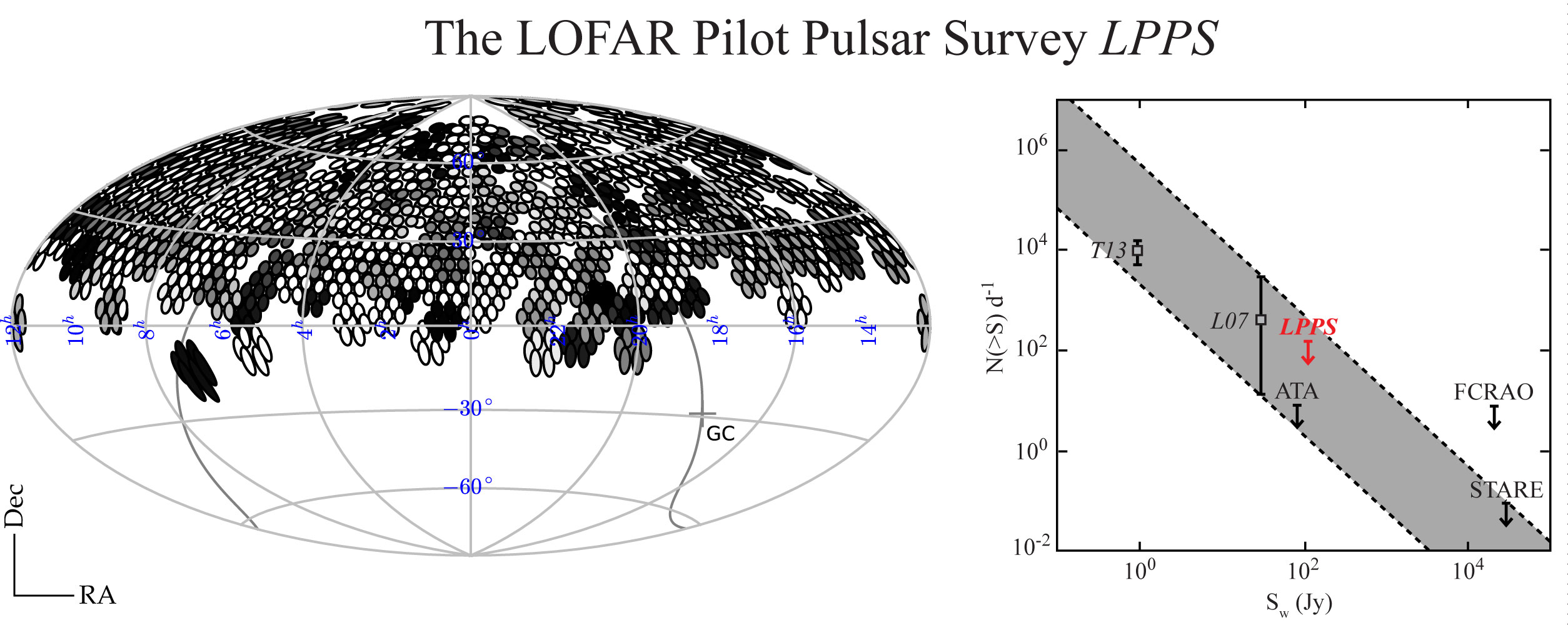Daily Image
03-10-2014The first low-frequency limit on Fast Radio Bursts
| Submitter: | Joeri van Leeuwen, Jason Hessels, Vlad Kondratiev et al. |
| Description: | The paper describing the two pilot surveys for radio pulsars and fast transients with LOFAR is now in press. In it, we report on the first low-frequency fast-radio burst (FRB) limit. The detection of such bright, highly dispersed radio bursts of apparent extra-galactic origin was first reported by Lorimer and team in 2007 and further detections have since been reported from Parkes and Arecibo. As the LPPS survey provides both long dwell times and large field of view, the survey data can be used to either detect or limit FRBs at low radio frequencies. LPPS covered a large fraction of the northern sky, ~1.4x10^4 sq.deg., with 1-hr dwell times. Each observation covered ~75 sq.deg. using 7 independent fields formed by incoherently summing the high-band antenna fields. The left panel in the image above shows this large on-sky time. The Galactic plane and Center are shown with a grey line and cross, respectively. The grayscale of the individual beams shows the usable observation length, where white is 0 min, and black the full 57 min. LPPS data was commissioning data and a significant fraction needed to be discarded because of early LOFAR teething problems. Still LPPS provided the equivalent of 9.7 minutes of all-sky integration, one of the highest coverages of any survey to date. We searched all LPPS single-pulse data for bursts at dispersion measures (DMs) between 2--3000 pc/cc. This is a much larger DM than predicted for any typical line-of-sight through our Galaxy away from the Galactic center. All found bursts were associated with either a known pulsar or RFI. Thus, no FRBs were detected in LPPS. From this, we derive a limit on the occurrence, at 142 MHz, of bright (S > 107 Jy for the narrowest) dispersed radio bursts of < 150 per day over the whole sky. By calculating the dispersion- and flux-limited volume, we can convert this celestial rate to a volumetric event frequency. We find that fewer than 250,000 bursts must go off per Gpc^3 per year. For a range of spectral indexes that number is consistent with the rate derived from the Parkes detections (right panel in the image). In ongoing LOFAR transient searches, we are continuing to improve on this limit and better constrain the spectra and scattering properties of such bursts. These searches will either soon detect such signals or show that the higher-frequency (~1.4 GHz) window is ideal for their detection. |
| Copyright: | JvL |
| Tweet |  |
